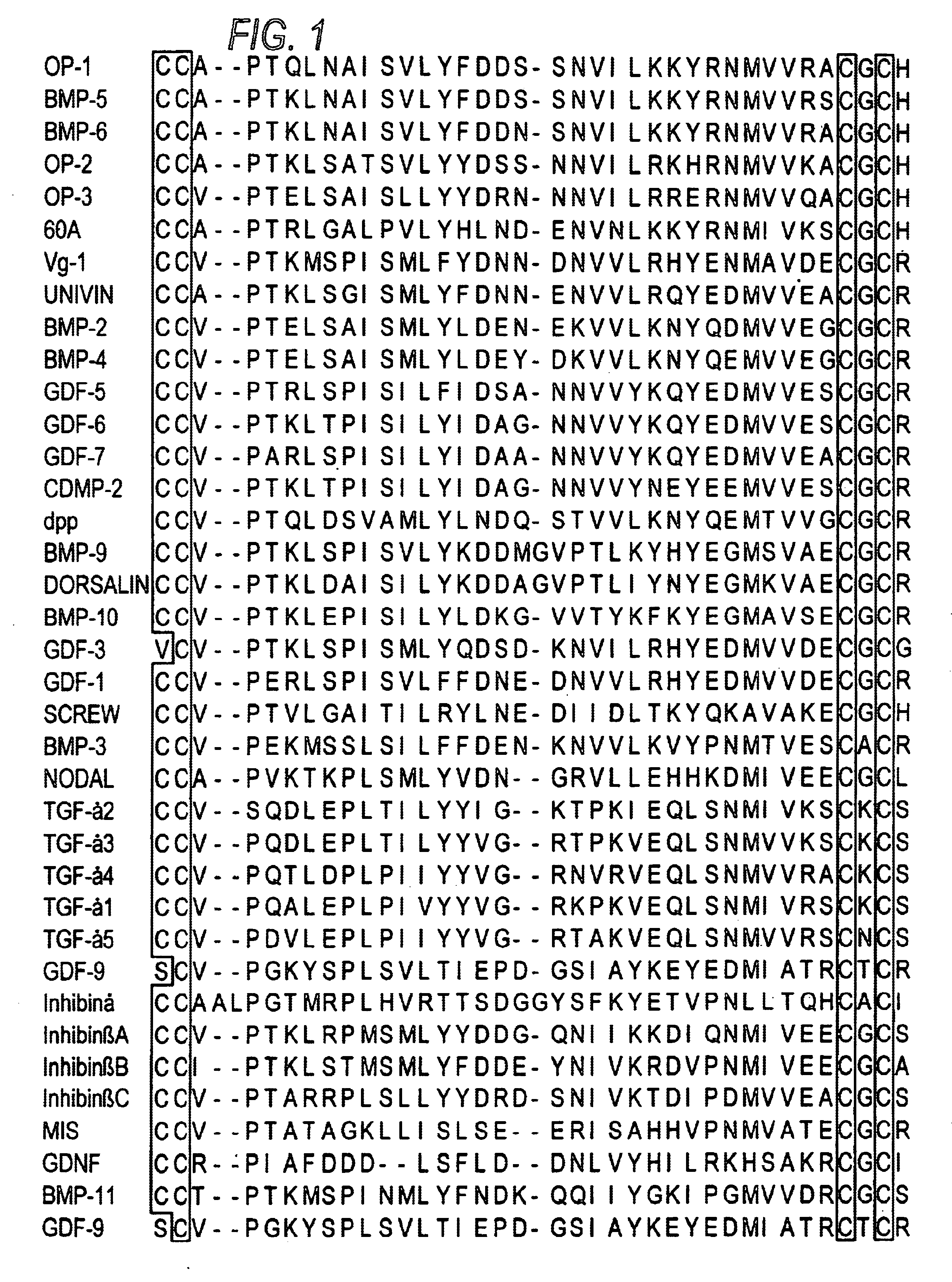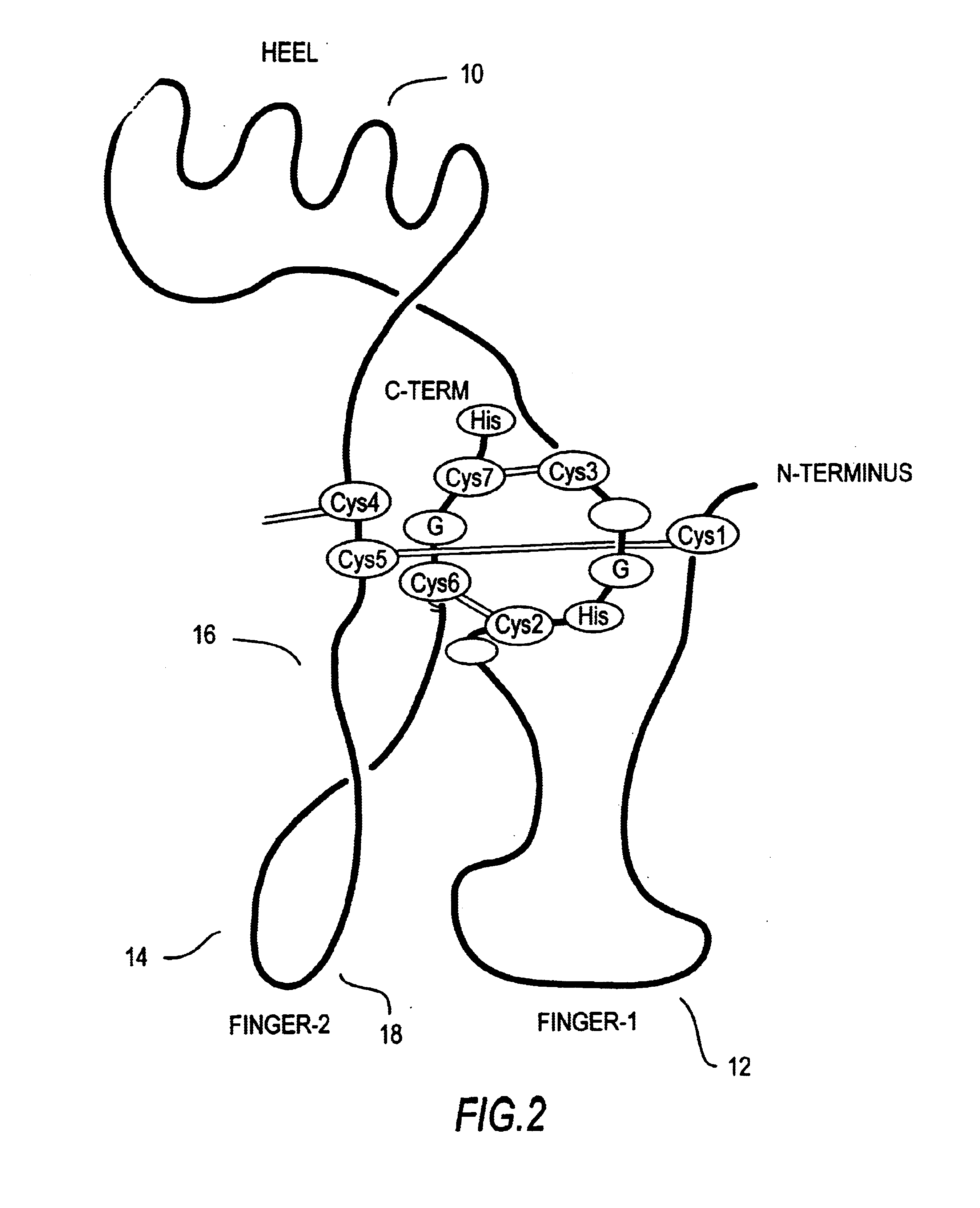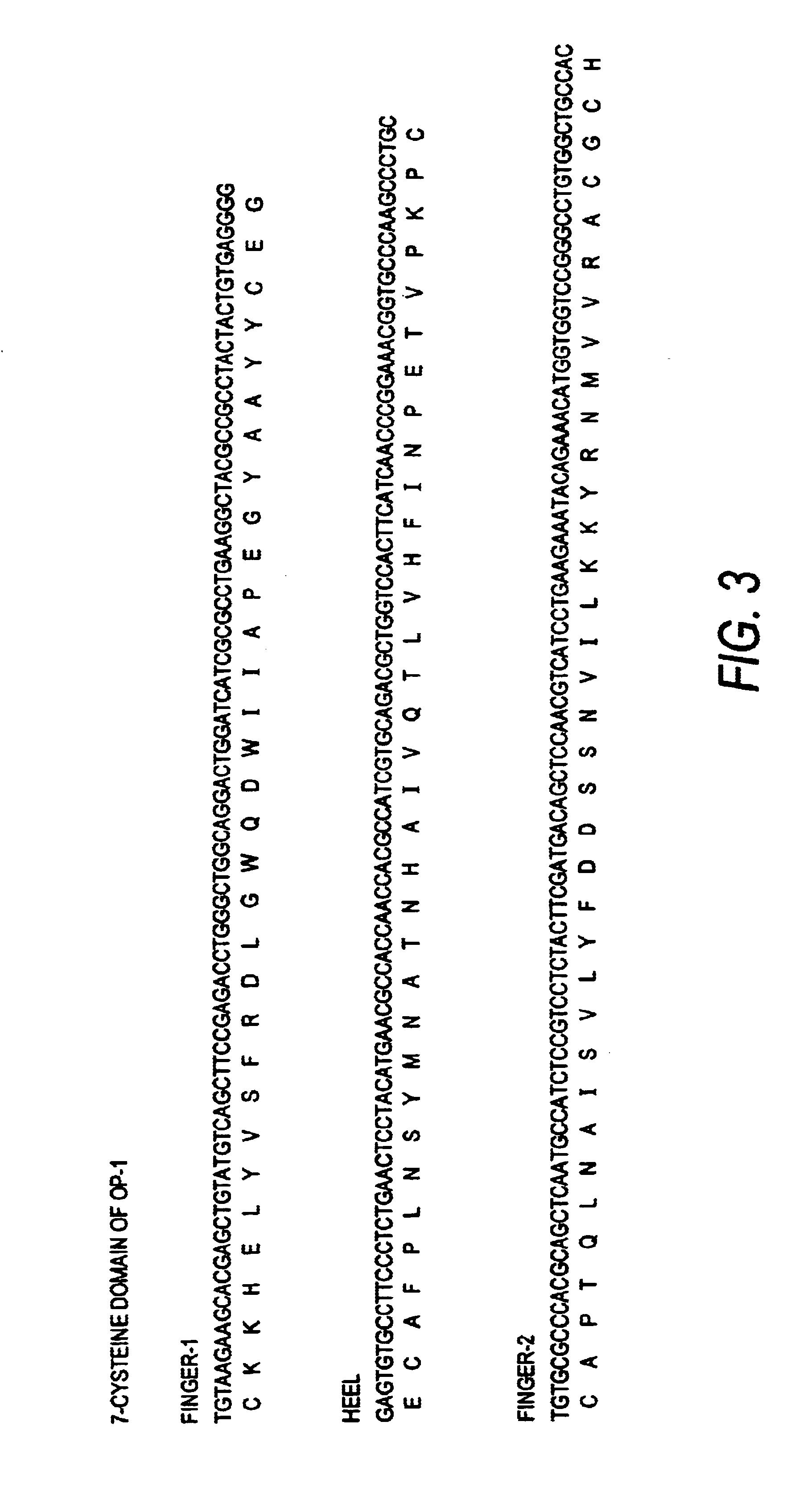Modified proteins of the TGF-β superfamily, including morphogenic proteins
a superfamily and protein technology, applied in the field of modified proteins, can solve the problems of low yield of optimally folded proteins, low stability and/or biological activity of proteins, and not all naturally occurring proteins when solubilized readily refold, etc., to achieve optimal ratios for adding two different subunits and improve biological activity of good refolders
- Summary
- Abstract
- Description
- Claims
- Application Information
AI Technical Summary
Benefits of technology
Problems solved by technology
Method used
Image
Examples
example 1
Synthesis of an Exemplary Chimeric Protein of the Present Invention: a BMP Mutant
[0161]FIG. 3 shows the nucleotide and corresponding amino acid sequence for the OP-1 C-terminal seven cysteine domain. Knowing these sequences permits identification of useful restriction sites for engineering in mutations by, for example, cassette mutagenesis or the well-known method of Kunkel (mutagenesis by primer extension using m13-derived single-stranded templates) or by the well-known PCR methods, including overlap extension. An exemplary mutant of OP-1 is H2460, with 4 amino acid changes in the finger 2 sub-domain and an amino acid change in the last C-terminal amino acid, constructed as described below. It is understood by the skilled artisan that the mutagenesis protocol described is exemplary only, and that other means for creating the constructs of the invention are well-known and well described in the art.
[0162]Four amino acid changes were introduced into the OP-1 finger 2 sub-domain sequen...
example 2
E. coli Expression of an Exemplary Chimeric Protein of the Present Invention: Expression of a BMP Mutant
[0170]Transformed cells were grown in standard SPYE 2YT media, 1:1 ratio, (see, Sambrook et al., for example) at 37° C., under standard culturing conditions. Heterologous protein overexpression typically produced inclusion bodies within 8-48 hours. Inclusion bodies were isolated and solubilized as follows. One liter of culture fluid was centrifuged to collect the cells. The cells in the resulting pellet then were resuspended in 60 ml 25 mM Tris, 10 mM EDTA, pH 8.0 (TE Buffer)+100 μg / ml lysozyme and incubated at 37° C. for 2 hours. The cell suspension was then chilled on ice and sonicated to lyse the cells. Cell lysis was ascertained by microscopic examination. The volume of the lysate was adjusted to approximately 300 ml with TE Buffer, then centrifuged to obtain an inclusion body pellet. The pellet was washed by 2-4 successive resuspensions in TE Buffer and centrifugation. The wa...
example 3
Refolding of an Exemplary Chimeric Protein of the Present Invention: a Mutant BMP Dimer
[0171]Proteins prepared as described above were dried down prior to refolding, or diluted directly into refolding buffer. The preferred refolding buffer used was: 100 mM Tris, 10 mM EDTA, 1 M NaCl, 2% CHAPS, 5 mM GSH (reduced glutathione), 2.5 mM GSSG (oxidized glutathione), pH 8.5. Refoldings (12.5-200 μg protein / ml) were carried out at 4° C. for 24-90 hours, typically 3648 hours, although longer than this (up to weeks) are expected to provide good refolding in some mutants, followed by dialysis against 0.1% TFA, then 0.01% TFA, 50% ethanol. Aliquots of the dialyzed material then was dried down in preparation for the various assays.
PUM
| Property | Measurement | Unit |
|---|---|---|
| Volume | aaaaa | aaaaa |
| Volume | aaaaa | aaaaa |
| Volume | aaaaa | aaaaa |
Abstract
Description
Claims
Application Information
 Login to View More
Login to View More - R&D
- Intellectual Property
- Life Sciences
- Materials
- Tech Scout
- Unparalleled Data Quality
- Higher Quality Content
- 60% Fewer Hallucinations
Browse by: Latest US Patents, China's latest patents, Technical Efficacy Thesaurus, Application Domain, Technology Topic, Popular Technical Reports.
© 2025 PatSnap. All rights reserved.Legal|Privacy policy|Modern Slavery Act Transparency Statement|Sitemap|About US| Contact US: help@patsnap.com



